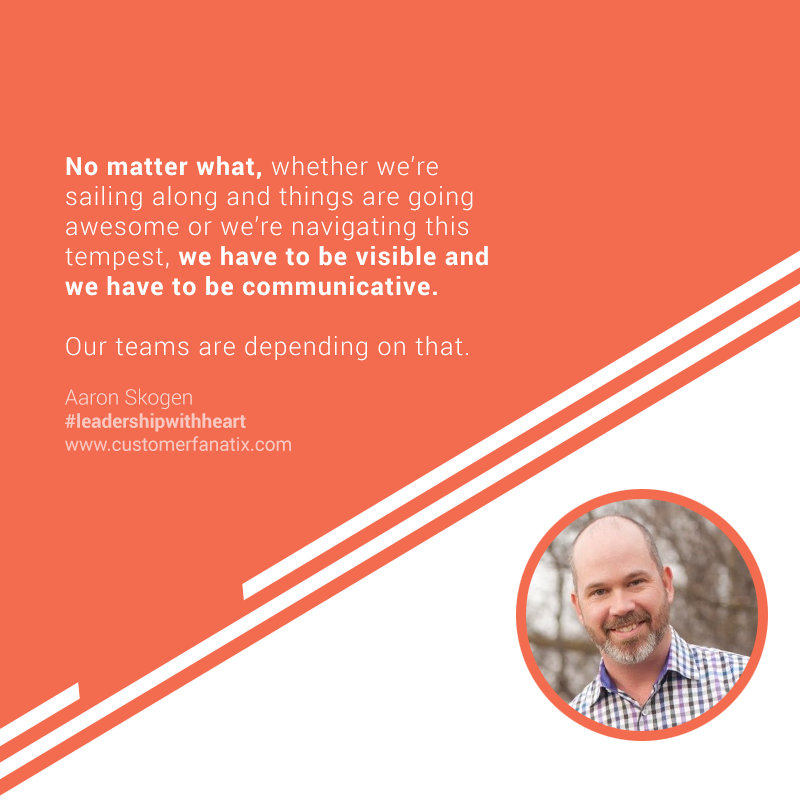When we talk about emotionally intelligent leaders, we think about those who are self-aware. They also have deep empathy for what each person is doing and a recognition of the pure craft and validity of the work they do.
Aaron Skogen is one of the most emotionally intelligent leaders on LinkedIn, which is why he is on the podcast today. I know him as someone who is so heart-centered and responds with a lot of authenticity and care and truthfulness.
Today we talk about where he gets his drive to become a leader, the lessons he learned in his career, taking employee appreciation to the next level and a lot more. There is so much wisdom shared in my chat with Aaron that I can’t share all of them in the show notes below, so make sure to listen to the full episode.
I am a senior executive who drives Continuous Process Improvement and Lean methodology at facilities that produce consumer packaged goods and durable goods.
I improved operational effectiveness at one facility by reducing DPMO to 60% and downtime 80%, while increasing productivity 15%, as well as increasing production by 41% during peak periods within one year for Toro’s Consumer Z products. Additionally, I led the Total Predictive Maintenance (TPM) roll-out at Schwan, establishing a baseline TPM program for Continuous Process Improvement in global supply chain facilities.
Facility management is a core competency; when I managed Birds Eye Foods Minnesota facility, I expanded processing from 14,500 acres for corn and 7500 acres for peas to 25K and 15K, respectively, within a 4-year period. The success of this expansion won me personal recognition by Refrigerated & Frozen Foods as “The Frozen Food Processer of the Year.” I was also tapped to serve on executive team for $350M start-up of Sysco’s VA regional distribution center
Volunteerism is also an important means by which I initiate positive change within my community, leveraging my core competencies on behalf of organizations whose mission align with my values.
The Ones Who Inspire You
I asked Aaron where his drive to lead comes from.
I don’t want to get super personal or anything like that, but my wife – we met when we were in high school. She was obviously pivotal in my life, we’ve known each other for a long time. She was really the person that helped me understand that I brought value, that my character – whatever, that I brought value.
I have to give her just tremendous credit for that.
For a long time, when I was young, I didn’t feel like I could add value, so I really credit her for that, and helping me be OK in my own skin and understand that just me being me is good enough.

The skin you’re in is just fine – you are good enough. #leadershipwithheart Share on X
Fail Quickly
That’s part of growth. We all make mistakes, and we hopefully fail quickly and try to learn from that and not repeat it. I just course-correct and move forward. Share on X
I remember earlier in my career, I was supporting a pretty large team. I really tried to be out, interacting with that team on a regular basis, and that team got used to that.
At one point, we ended up in just a bad place. The business itself was struggling.
My focus shifted to try to get us out of the muck, but in doing that, what I failed to do was communicate at the level I had been communicating and interacting at the level I had been interacting.
The result was my team going, “What’s going on? This has to be really, really bad.” It was bad, but we weren’t going under – it wasn’t anything like that. It was a tough period.
But what I failed to do is continue to communicate and interact with the team. In my head, in the process of trying to get us out of the muck, I kind of left the team behind.
What that did is it accentuated the tension within the organization because I wasn’t visible and transparent.
Communicate, and Communicate Some More
I have a friend, and years ago he would say, “You communicate, you communicate, and you communicate some more. And when you think you’ve communicated enough, you communicate even more.”
He would try to drill that into me.
Ask yourself, Am I communicating the right way? Is the message breaking through those barriers? Share on X
When we talk about communications, the other piece of it is knowing our audience and knowing whether or not the message – if we’re connecting the dots. That’s the other piece that I continue to refine and work on being better at – communicating with intention and meaning with my audience in mind.
When we give praise or we give recognition, and we do that face to face and we do that with sincerity, it means a lot. Share on X
When we make mistakes as leaders, when we own that mistake, and when we sincerely apologize or admit, that carries so much weight and it keeps that bond of trust and respect intact. Share on X
Take the time to understand how each one works as an individual and how they work as a team, and how those teams interact. Share on X
Mentions
Connect with Aaron on LinkedIn
Subscribe, rate and review the podcast on iTunes!
Listen to the podcast on Spotify